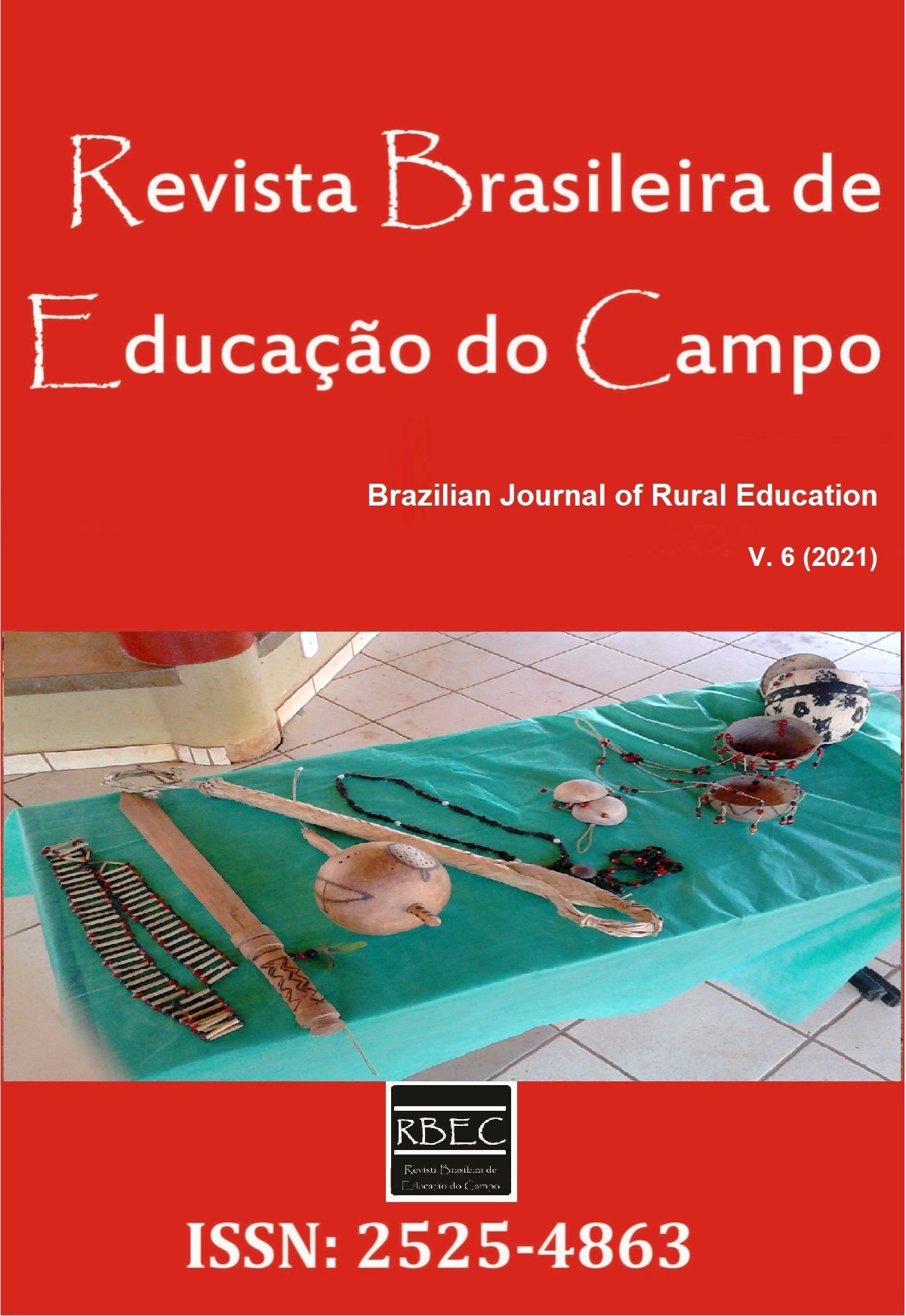Dual representations of the rural in Brazilian cinematography: implications for education
DOI :
https://doi.org/10.20873/uft.rbec.e12247Mots-clés :
Education. Rural. Cinema and Education. Cinematographic representations. Rural and Urban.Résumé
ABSTRACT. There is a strong cinematographic representation that establishes rural and urban in a dichotomous relationship that commonly sustains the speech of rural articulated to social issues and inequality and naturalizes this representation. In order to subsidise the pedagogical practice of teachers on the critical stance of the rural and the urban, this paper aims to question how the representations of the rural have been approached by the audio-visual language. The analysis has a qualitative approach and combines methodological procedures of documentary, historiographic and film analysis. Therefore, it is approached in a historical perspective the dual discourse that represents the peasant; in the sequence it is discussed the correct conceptions of territorial delimitation, and finally, presented, in a sample of films, the synthesis of representations that follows the same line of systematic and progressive arguments of representation of the rural and the urban. The research points to the conclusion regarding the importance of school, to subsidise critical reading about the representations covered in films, which overcomes the dichotomous view that naturalizes social problems as particular to the rural.
Téléchargements
Références
Araújo, L. C. (2013). O campo e a cidade no cinema silencioso pernambucano. In Anais de textos completos XVII Estudos de cinema e audiovisual SOCINE (pp. 430-445). Florianópolis, SC.
Bakhtin, M. M. (2003). Estética da Criação Verbal. Tradução: Paulo Bezerra. 4º ed., São Paulo: Martins Fontes.
Bakhtin, M. M. (1997). Marxismo e Filosofia da Linguagem. Tradução: Michel Lahud e Yara Fratechi Vieira. 8. ed. São Paulo: Hucitec.
Bogo, A. (2008). Identidade e luta de classes. São Paulo: Expressão Popular.
Bourdieu, P. (1997). Sobre a televisão. Tradução: Maria Lúcia Machado. Rio de Janeiro: Jorge Zahar Editora.
Catani, A. M., & Gilioli, R. S. P. (2004). Cinema, escola e representações da infância em Guerra dos Botões (1961). In Setton, M. G. J. (Org.). A cultura da mídia na escola: ensaios sobre cinema e educação (s./p.). São Paulo: Annablume.
Catani, A. M. (2004). História do cinema brasileiro: 4 ensaios. São Paulo: Panorama do Saber.
Costa, M. H. B. V. (2013). Cinema e construção cultural do espaço geográfico. Revista Brasileira de Estudos de Cinema e Audiovisual – REBECA, 3. 250-262. https://doi.org/10.22475/rebeca.v2n1.45
Duarte, R. (2002). Cinema & educação: refletindo sobre cinema e educação. Belo Horizonte: Autêntica.
Fabris, E. H. (2008). Cinema e Educação: um caminho metodológico. Educação e Realidade, 33(1), 117-134.
Fernandes, S. L. (2007). Filmes em sala de aula – realidade e ficção: uma análise do uso do cinema pelos professores de história (Dissertação de Mestrado) Universidade Federal do Paraná, Paraná.
Ferro, M. (1992). Cinema e História. Tradução: Flávia Nascimento. Rio de Janeiro, Paz e Terra.
IBGE. (2017). Classificação e caracterização dos espaços rurais e urbanos do Brasil: uma
primeira aproximação. Instituto Brasileiro de Geografia e Estatística (IBGE). Rio de Janeiro. Recuperado de https://biblioteca.ibge.gov.br/visualizacao/livros/liv100643.pdf
Jeca-tatu. (2017). Michaelis: Dicionário Brasileiro da Língua Portuguesa. Editora Melhoramentos.
Jeca. (2017). Michaelis: Dicionário Brasileiro da Língua Portuguesa. Editora Melhoramentos.
Leitão, L. R. (2007). O campo e a cidade na literatura brasileira. Veranópolis, RS: Iterra.
Lobato, M. (2012). Urupês. São Paulo: Editora Globo.
Penafria, M. (2009). Análise de Filmes – Conceitos e Metodologias. In VI Congresso SOPCOM, Lisboa, Portugal.
Reis, N. G. (2006). Notas sobre urbanização dispersa e novas formas de tecido urbano. São Paulo: Via das Artes.
Schmidt, A. L. P. (1948). Fundamentos. Revista de Cultura Moderna, 4-5(2), 293-300.
Silva, J. G., & Grossi, M. E. (2001). O novo rural brasileiro: uma atualização para 1992-98. Techinical Report, Unicamp.
Tolentino, C. A. F. (2001). O rural no cinema brasileiro. São Paulo: Editora UNESP.
Veiga, J. E. (2005). A relação rural/urbano no desenvolvimento regional. Cadernos do CEAM (Centro de Estudos Avançados Multidisciplinares da Universidade de Brasília - UnB), 17, 9-22.
Whitaker, D. C. A. (1992). O rural urbano e a escola brasileira: ensaio de interpretação sociológica. Travessia, 5(12), 30-35. https://doi.org/10.48213/travessia.i12.317
Whitaker, D. C. A. (2009). Reforma Agrária e Meio Ambiente: Superando Preconceitos Contra o Rural. In Ferrante, V. L. B., & Whitaker, D. C. A. (Orgs.). Retratos de Assentamentos (s./p.). Araraquara: Uniara. nº 12.
Williams, R. (2011). O campo e a cidade: na história e na literatura. Tradução: Paulo Henriques Britto. São Paulo: Companhia das Letras.
Téléchargements
Publié-e
Comment citer
Numéro
Rubrique
Licence
Proposal for Copyright Notice Creative Commons
1. Policy Proposal to Open Access Journals
Authors who publish with this journal agree to the following terms:
A. Authors retain copyright and grant the journal right of first publication with the work simultaneously licensed under the Creative Commons Attribution License that allows sharing the work with recognition of its initial publication in this journal.
B. Authors are able to take on additional contracts separately, non-exclusive distribution of the version of the paper published in this journal (ex .: publish in institutional repository or as a book), with an acknowledgment of its initial publication in this journal.
C. Authors are permitted and encouraged to post their work online (eg .: in institutional repositories or on their website) at any point before or during the editorial process, as it can lead to productive exchanges, as well as increase the impact and the citation of published work (See the Effect of Open Access).














